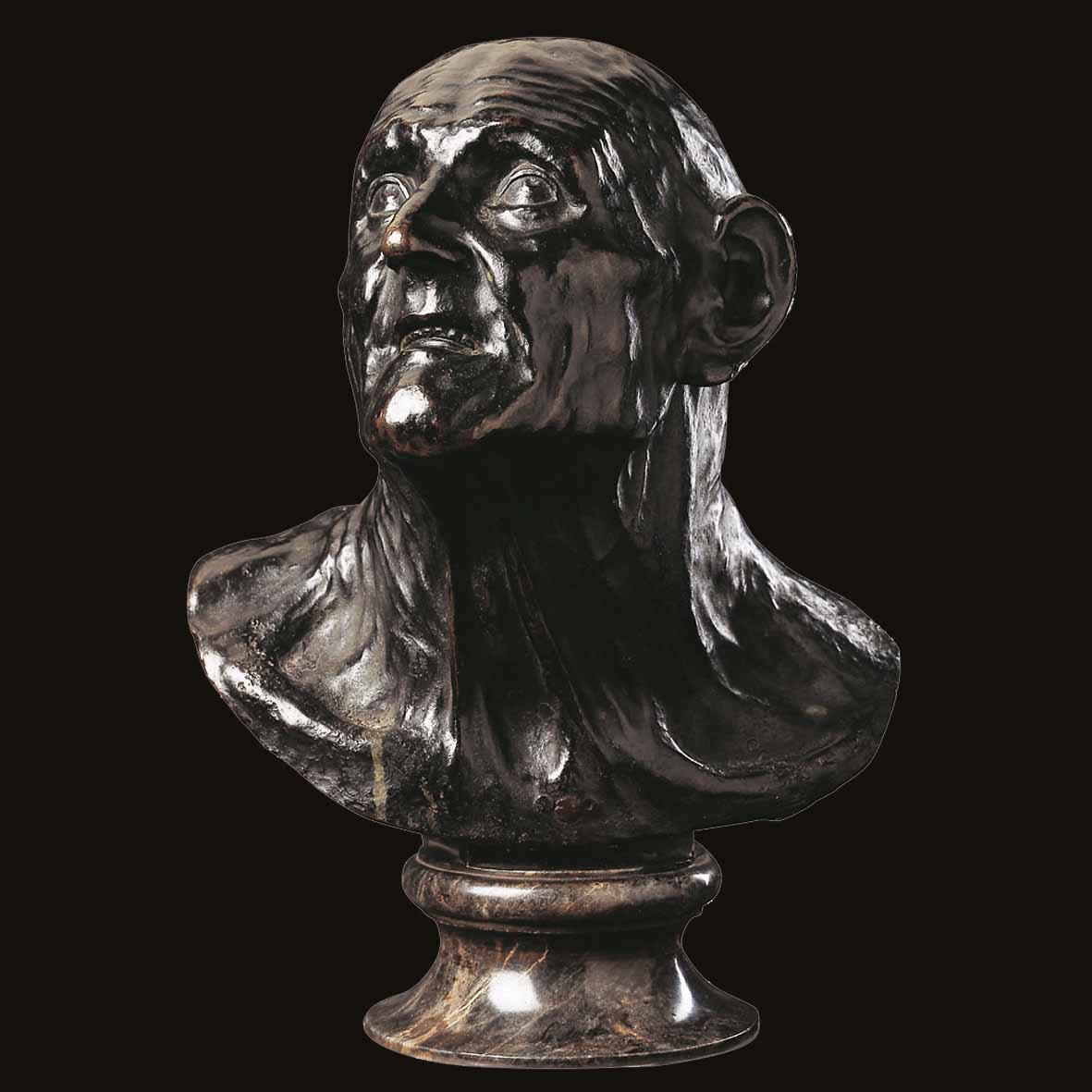
So-called Head of Seneca
Guido Reni (1575-1642)
17th century, Bronze
Guido Reni's Bolognese biographer, Count Carlo Cesare Malvasia, recalls that the great painter, working as a sculptor, modelled a head known as the Seneca Head, which travelled through all the schools and which he carved from a slave in Rome that he found in Ripa (that it “travelled through all the schools” meant that many versions of it were made and that it was studied by young artists). The knowledge of Reni’s creation of such a work was lost over time; it was even believed to be an ancient original. In the early 20th century, critics again addressed Reni's activity as a sculptor, recovering Malvasia's passage. Since the beginning of the 17th century, casts and copies of this image of an old man had been made, admired for the intensity of the expression, the dramatic force accorded by the tension of the tendons in the neck, and its fixed, desperate gaze: all elements that led people to believe it was the face of the Stoic philosopher whose life would end in suicide.

